You know you have a great job when… you get to fly a brand new Light-Sport Aircraft on a bright, beautiful, blue sky day at a Sport Pilot-friendly airport. The job: writing this story and making a video. The task: Go fly (duh!). The airport: Mt. Vernon (KMVN), the award-winning Illinois facility that hosts the Midwest LSA Expo lead by the most customer-attentive airport manager one can imagine. What’s not to love?
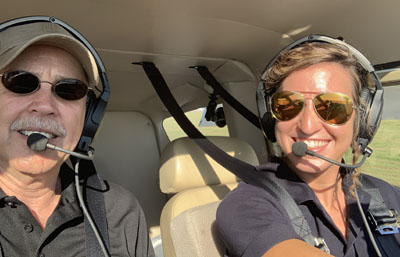
My time aloft was with Quirin Riddle, a young pilot that handled Colt with precision, methodically following checklists.
The specific task in this case: Fly the Texas Aircraft Manufacturing Colt 100, now in the final stages of gaining its Special Airworthiness certificate as a Special Light-Sport Aircraft. See our earlier article.
The day could not have been more lovely and the air has never been smoother. The only thing I needed to make the experience a complete success was pleasant cabin mate as we went aloft to check out the Colt. Base covered: Quirin Riddle, a 300-hour pilot with 30 hours in type showed me around the cockpit and how Colt behaves in the air.
Look for a full Video Pilot Report and interview when Videoman Dave can get this one edited*.
Gone Colt Flying!
As I usually do, I asked Quirin to treat our flight as if it was you — yes, YOU! — in the cockpit. I told her to demonstrate for me what she would do for any prospective customer. You want to do this; I was fortunate enough to do it for you.
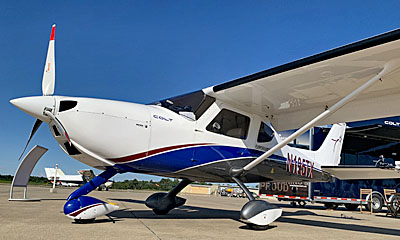 The idea is that since you could not go aloft in Colt I wanted to do what you’d have done had you been at Midwest LSA Expo (which I hope you will be next year; it is simply perfect for demonstration flights… the best of any airshow we attend). Through many years of experience, I have learned to start these Video Pilot Reports by asking the factory pilot to show me exactly what they’d show you if you were the one sitting in my seat.
The idea is that since you could not go aloft in Colt I wanted to do what you’d have done had you been at Midwest LSA Expo (which I hope you will be next year; it is simply perfect for demonstration flights… the best of any airshow we attend). Through many years of experience, I have learned to start these Video Pilot Reports by asking the factory pilot to show me exactly what they’d show you if you were the one sitting in my seat.
Karin did that, so we ran through taxiing, basic takeoff and climb to altitude, followed by maneuvers. We did cruise speed evaluations, slow flight, and stalls. After she showed me what Colt could do, I requested the controls and I performed my usual evaluation starting with some dutch rolls, a non-aerobatic exercise I use to learn the handling characteristics. If I can do reasonably coordinated dutch rolls pretty quickly, as I did in Colt, that tells me this is a well-handling flying machine.
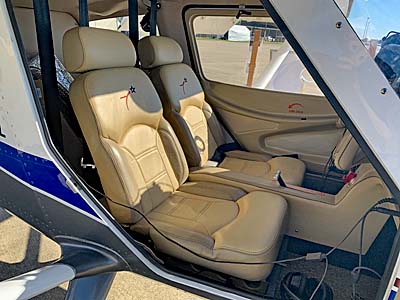 Unlike most LSA, Colt uses a yoke rather than conventional or side stick. I’m a joystick lover but I acknowledge most pilots trained in the last few decades may be more comfortable with a yoke. Some prefer it so much they will tell you an airplane is easer to handle with a yoke. I think it’s a personal preference but if you prefer a yoke, Texas Aircraft’s Colt is one that may please you.
Unlike most LSA, Colt uses a yoke rather than conventional or side stick. I’m a joystick lover but I acknowledge most pilots trained in the last few decades may be more comfortable with a yoke. Some prefer it so much they will tell you an airplane is easer to handle with a yoke. I think it’s a personal preference but if you prefer a yoke, Texas Aircraft’s Colt is one that may please you.
Colt is an all-aluminum construction, meaning any repair work needed after a purchase can be done by a great many mechanics anywhere in the world. It is powered by the Rotax 912 ULS carbureted, 100 horsepower engine. Texas Aircraft chose a three-blade Sterna prop. You may not be familiar with this Asian brand but it appears very well made. Dynon provided the avionics and auto pilot.
We rotated at 50 knots after a takeoff roll of 400-500 feet, common for many Light-Sport Aircraft. Remember that this is a prototype Colt. The number two model is currently going through the process of gaining Special LSA approval and a third, conforming example is under construction in the company’s home base in Hondo, Texas. Prototypes are usually somewhat heavier than final production examples and N105TX was no exception. In standard production models, I would expect takeoff roll to be marginally shorter and the climb to more robust than the 700-800 feet per minute we averaged on a day slightly warmer than standard atmospheric conditions.
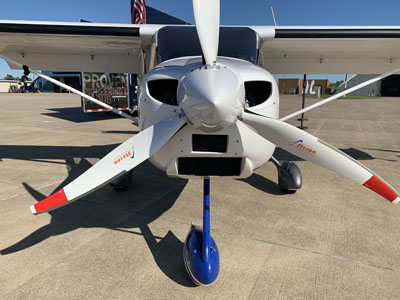
In final form, Colt will offer cruise at about 110 knots though we saw less at lower altitudes and without final optimization of prop and engine, plus the added prototype weight.
Stalls occurred at very slow speeds — high 30 knots to low 40 knots indicated air speeds — and were all very well behaved. In all maneuvering that I did, Colt felt very solid and secure. It should be a great aircraft choice for those who want that classic Cessna experience in a Light-Sport Aircraft.
Speed Specs for Colt 100
- Never Exceed — 134 knots / 154 mph
- Max Speed at Max Continuous Power — 120 knots / 138 mph
- Max Speed in Turbulent Conditions — 105 knots / 120 mph
- Maneuvering Speed — 90 knots / 103 mph
- Best Angle of Climb Speed — 60 knots / 69 mph
- Stall Speed, Flaps Retracted — 44 knots / 50 mph
- Stall Speed, Flaps for Landing — 38 knots / 44 mph
* What does it take to edit a Video Pilot Report?
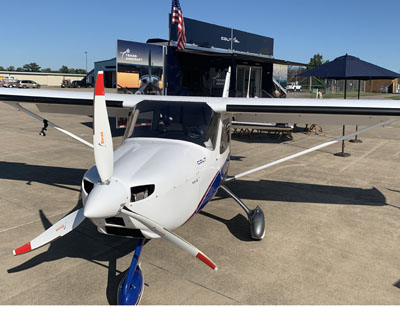
While Colt attracted attendees of Midwest LSA Expo 2019, Texas Aircraft’s wheeled display (background) caused “trailer envy” among some of the other vendors at the event.
Let’s start by considering we mounted six cameras that ran for an hour each, two hand held cameras used to shoot 45 minutes more, plus a series of still shots. Then add the audio track from multiple cameras. First task: watch and log every minute of every video — that’s around nine hours merely to observe what you have available to use in assembling the video.
Are you exhausted yet? You haven’t even begun editing. Then scour the Internet for more useful footage and review a thumb drive the company provided. You have now spent about two full workdays and you still haven’t even started editing. Pulling it all together will consume more days …all for a single video.
That’s probably more than you wanted to know but hopefully you get the idea that these popular Video Pilot Reports represent a lot of work.
Please be patient while Videoman Dave does his job.
While you wait on the formal VPR, here’s a mini-video to whet your appetite:


Another LSA with a Rotax engine? Is a Continental O-200 available as an alternate or an O-200 knock off or copy? The simplicity and reliability of the O-200 is unmatched. Though Rotax could catch up some day. Does not appear likely in the near term though. My thought: what about a balanced and blue printed VW Volkswagen engine with dual ignition should have the same simplicity and reliability as a Continental O-200 engine? And cost less than the Rotax engine? VW engines have never had a large following; and I do not know why considering how simple they are and how easy it should be to bring them to aircraft quality by balancing and blue printing the engine?
Also, checking the metallurgy of all VW engine parts would also be a necessity to insure an aircraft quality engine? Metallurgy of certified aircraft engines is probably acceptable but could be better. One occasionally hears of engine parts failing before TBO; though pilot error is still over 70% of aircraft problems based on my readings?
I once enjoyed your site immensely, and for years.
Your website is losing my interest. You go cheap and skimpy. Why should I watch? Where are the interviews I have seen in the past? Where is the in-depth comment?
Your free content does not encourage anyone to subscribe.
Hi Tim: Well, your comments are obviously not what we want to see (but fortunately, we almost never hear comments like yours). You say we are “cheap and skimpy,” although ByDanJohnson.com is also described by others as a “massive website.” You also say, “Why should I watch,” perhaps implying you refer to the videos I produce or in which I appear. Regarding “Where is the in-depth comment?” …well, again, I have been faulted for giving too much information (making longer videos or articles). The good news is that you don’t have to pay a dime for any content; subscribing helps us but is not mandatory. So you can visit or not, read or not, watch or not. It’s all up to you. Perhaps you can find another website with similar information that pleases you more. I wish you the best and thanks for enjoying this website in the past.